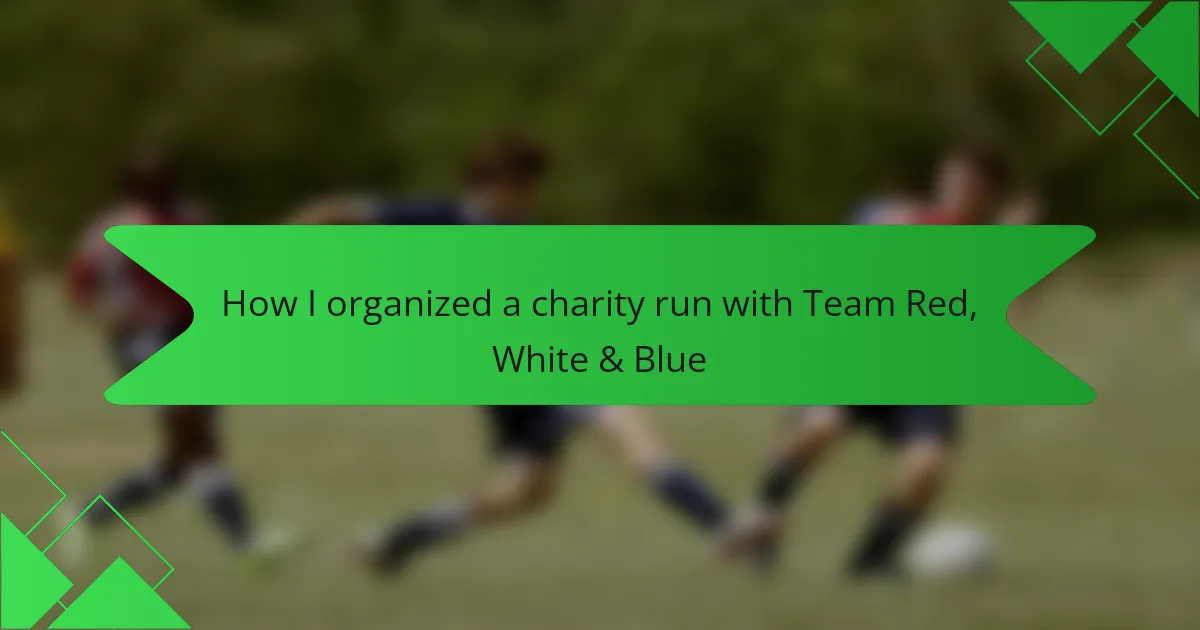Key takeaways
- Obstacle course racing (OCR) emphasizes resilience and teamwork, showcasing personal growth through physical challenges and camaraderie.
- Team Red, White & Blue (Team RWB) connects veterans with communities through fitness, promoting emotional healing and a sense of belonging.
- Effective planning of charity runs involves strategic logistics, clear communication of purpose, and creating an inclusive environment for all participants.
- Promotional success relies on authentic storytelling, engaging social media tactics, and building local partnerships to amplify the cause.

What Is Obstacle Course Racing
Obstacle course racing, or OCR as many call it, is more than just a run—it’s a test of grit, agility, and mental toughness. Think about it: you’re not just moving your legs forward; you’re climbing walls, crawling through mud, and balancing on beams. It’s like your body becomes a toolkit, ready for any challenge thrown its way.
I remember the first time I faced an obstacle course; I was nervous and unsure if I could finish. But pushing through those physical hurdles taught me something valuable—resilience isn’t just about strength, it’s about refusing to quit even when your body screams otherwise. Doesn’t that make you wonder how much we’re truly capable of when we step outside our comfort zones?
What fascinates me most is how OCR brings people together, all racing through the same trial but each with their own story and struggles. Have you ever thought about how a simple course could reflect life itself, with obstacles that seem daunting but become conquerable one step at a time? It’s that blend of challenge and camaraderie that makes obstacle course racing so compelling.
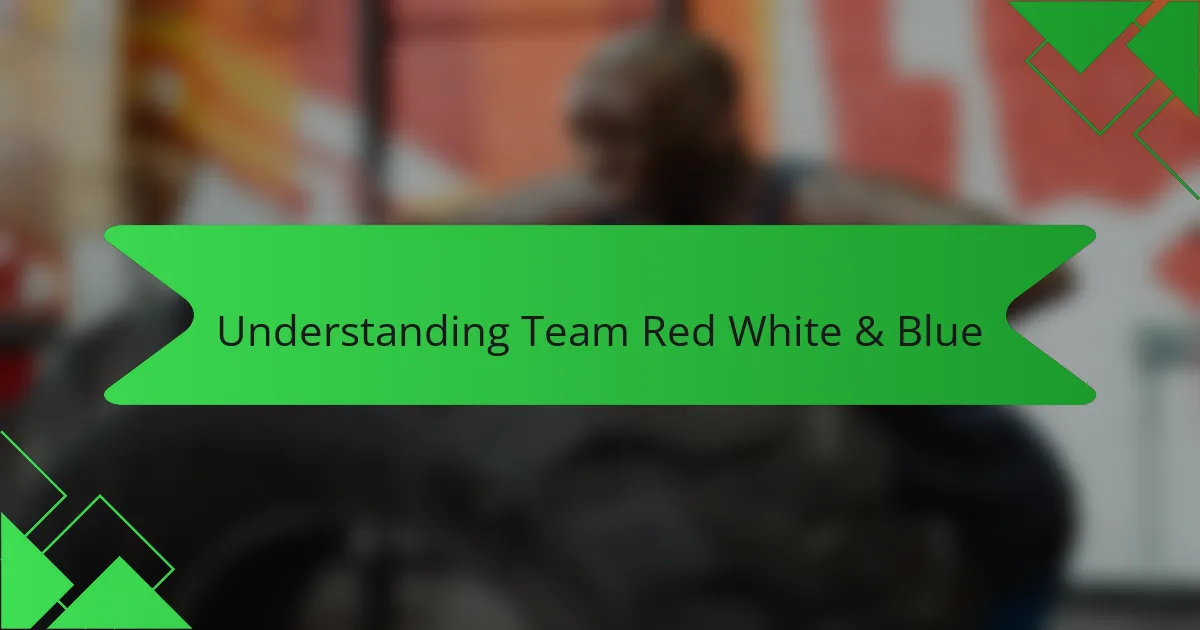
Understanding Team Red White & Blue
Team Red, White & Blue (Team RWB) isn’t just another running group; it’s a community built around something deeper—connecting veterans to their fellow Americans through physical and social activity. When I first learned about Team RWB, I was struck by its mission to use fitness as a bridge, helping veterans reclaim a sense of belonging after service. Have you ever thought about how powerful that kind of connection can be for someone transitioning to civilian life?
What sets Team RWB apart is how it blends purpose with action. Their events aren’t just about running; they’re about fostering support networks, promoting well-being, and honoring the sacrifices made by our military. I’ve seen firsthand how participating in a Team RWB event transforms not only the body but also lifts the spirit, reminding us that physical challenges are a path to emotional healing.
Understanding Team RWB means recognizing the value they place on camaraderie and resilience, qualities that resonate strongly with anyone who’s faced an obstacle course. It’s inspiring to think that through shared sweat and effort, these gatherings create lifelong bonds and remind us all what it means to serve and support one another.

Planning a Charity Run Event
Planning a charity run event takes more than just setting a date and sending out invites. From my experience, it’s about aligning every detail with the cause’s mission—in this case, bringing people together through movement and purpose. I remember juggling permits, choosing a route that challenged runners but was safe, and coordinating volunteers who shared the same passion. Have you ever thought about how each logistical choice impacts not just the event but the participants’ experience?
One of the trickiest parts I encountered was balancing fundraising goals with creating an inclusive event that welcomed everyone, whether they were competitive runners or first-timers. It wasn’t just about raising money; it was about building a community that felt connected to Team Red, White & Blue’s spirit. This made me realize how important it is to communicate the “why” behind the run clearly—making people feel like they’re part of something bigger, not just another race.
Timing and promotion were also critical pieces of the puzzle. I learned that starting early and using multiple channels—social media, local clubs, even word of mouth—made all the difference in turnout and enthusiasm. Have you noticed how the buzz around an event grows when everyone involved believes deeply in the cause? That energy is contagious and it’s what turns a simple run into a meaningful movement.
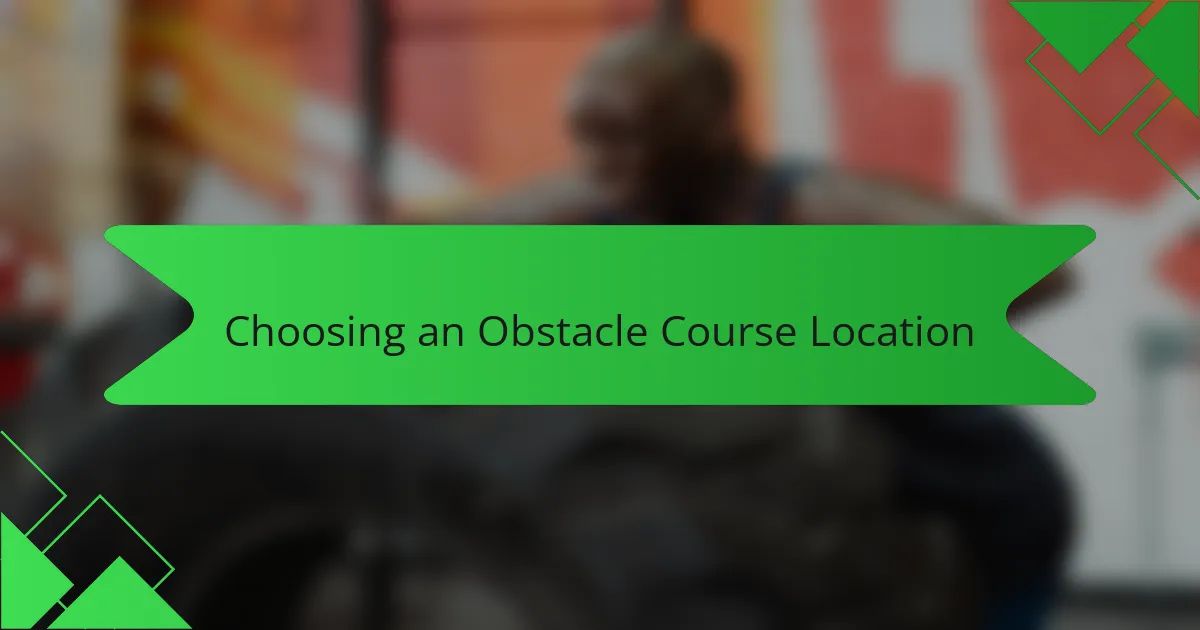
Choosing an Obstacle Course Location
Choosing the right location for an obstacle course is crucial—it sets the stage for the entire experience. I remember scouting several spots before settling on one with a natural mix of terrain; uneven ground, wooded areas, and open fields. It wasn’t just about physical challenge, but also creating a space that felt immersive and adventurous for everyone involved.
One thing I learned quickly is to consider accessibility alongside the course’s difficulty. Could participants easily get there? Was parking sufficient? These practical details might seem mundane, but they shape how welcomed people feel from the moment they arrive. Have you ever shown up to an event only to be frustrated before it even begins? That’s exactly what I wanted to avoid.
I also thought about how the environment could tell a story, complementing the mission of Team Red, White & Blue. A location that echoed resilience—maybe battle-scarred trails or historic grounds—adds layers of meaning. It’s like the course itself becomes a silent partner in the event, reminding us why we’re pushing through each obstacle, together.
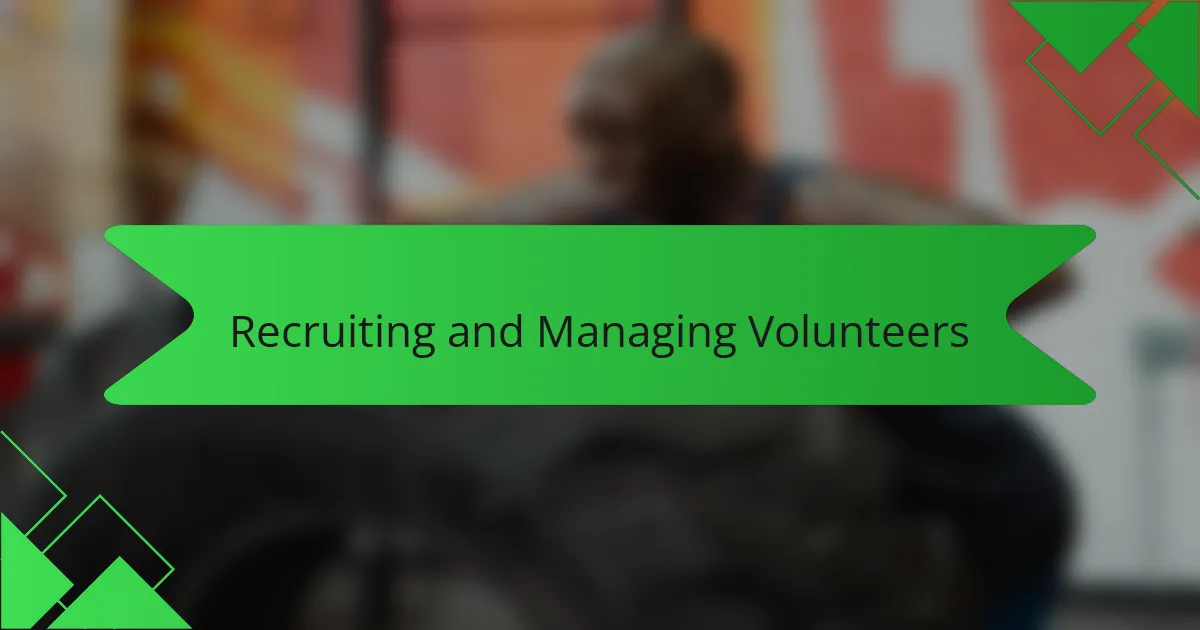
Recruiting and Managing Volunteers
Finding the right volunteers felt like piecing together a puzzle where each person’s passion and skills mattered. I reached out through local clubs, social media, and even Team RWB’s network, making sure to highlight how their efforts would directly support veterans. Have you ever noticed how people step up when they truly believe their time will make a difference?
Managing volunteers wasn’t about just assigning tasks; it was about building a sense of ownership and community. I learned that clear communication and recognizing small wins kept the energy high and everyone feeling valued. When volunteers see the impact of their work firsthand, their commitment naturally deepens—don’t you think that’s the magic ingredient?
One unexpected lesson came from coordinating volunteers during the race day chaos. Staying flexible and ready to problem-solve on the fly made all the difference. I realized that empowering team leads to make quick decisions prevented bottlenecks and kept the event running smoothly, proving that trust goes a long way in volunteer management. Have you experienced how a little trust can turn a group of helpers into a tight-knit team?
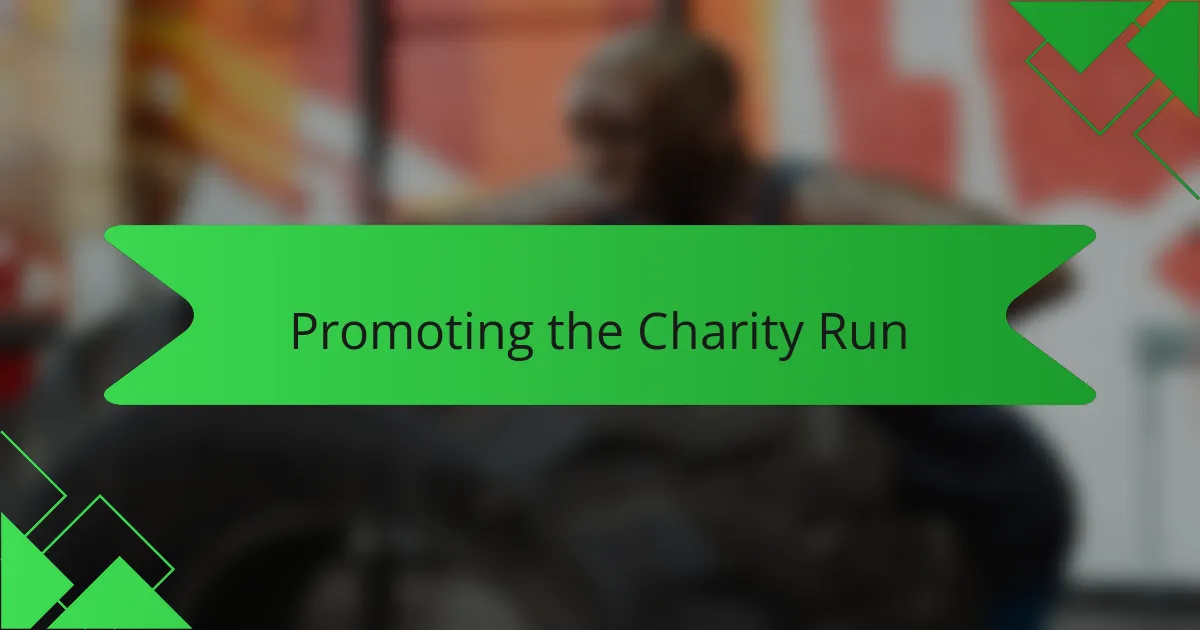
Promoting the Charity Run
Promoting the charity run was a challenge that demanded creativity and heart. I found that sharing personal stories about why Team Red, White & Blue matters turned strangers into eager participants—people want to connect with a cause that feels real and relatable. Have you ever noticed how a simple story can spark excitement and motivate someone to lace up their running shoes?
Social media became my best friend in spreading the word. Posting behind-the-scenes glimpses, highlighting veteran participants, and encouraging shares created a buzz that felt organic rather than forced. I realized early on that people don’t just want to hear about the event; they want to see the spirit behind it. Doesn’t that kind of authenticity make you more inclined to join or support?
Local partnerships also proved invaluable. Reaching out to running clubs, gyms, and even small businesses not only widened our audience but built a sense of community around the cause. The enthusiasm from these groups reminded me how powerful collaboration is—it’s like each voice adds a new layer of energy that pushes the whole event forward. Have you ever been part of something where the collective effort was bigger than the sum of its parts? That’s exactly the feeling I aimed to create.
